Sybil Thomas
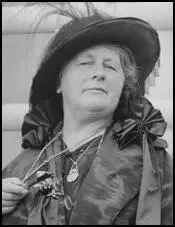
Sybil Margaret Haig, the fourth daughter in the family of five daughters and five sons of George Augustus Haig (1820–1906), merchant and landowner, and his wife, Anne Eliza Fell, was born at 52 Norfolk Square, Brighton, on 25 February 1857. (1)
Sybil had an impressive extended family with a long history proudly traced back to Petrus De Haga of the 12th century. Her father was related to Douglas Haig who during the First World War would be promoted to the rank of Field Marshall and commander in chief of the British Expeditionary Force. (2)
Sybil had seventy-two first cousins. An acquaintance described the clannish family as "a regular maelstrom... if you entered into friendly relations with them you had to become a Haig". (3)
George Haig became a successful agent in England for the sale of Scotch and Irish spirits. In 1858 he purchased 2,548 acres of land with eleven farms near the village of Llanbadarn Fynydd, between Llandrindod Wells and Newtown. In 1862 he designed and had built Pen Ithon Hall. Haig became High Sheriff for the county as well as a magistrate. (4)
Sybil Haig was a talented artist and painted miniatures and later exhibited some of her work in London galleries. In the summer of 1880 she met David Alfred Thomas of Ysguborwen, Glamorgan. Despite the objections of her father, George Haig, the couple got engaged in July 1881. (5)
On 27 June 1882, aged twenty-five, she married, David Alfred Thomas. In 1888 Thomas became the Liberal MP for Merthyr Tydfil. Her husband's political career meant that she spent much time in London but their main home was a large house and estate at Llanwern, Monmouthshire. A daughter, Margaret Haig Thomas was born at Princes Square, Bayswater, on 12th June 1883. (6) Margaret later wrote: "My father was disappointed: he wanted a boy". (7)
David Alfred Thomas MP
David and Sybil's home in Llanwern had twelve rooms. They had a resident cook and a number of domestics. Margaret was taught by European governesses (French then German) before being educated at Notting Hill High School and St Leonards School. Margaret spent a lot of time with her fourteen first cousins. She also spent a lot of time with two aunts, Janet Haig Boyd and Charlotte Haig. Like Sybil, the two aunts were strong feminists." (8)
In 1888 Thomas became the Liberal MP for Merthyr Tydfil. Her husband's political career meant that she spent much time in London but their main home was a large house and estate at Llanwern, Monmouthshire. A daughter, Margaret Haig Thomas was born at Princes Square, Bayswater, on 12th June 1883. (9)
In June 1890 Thomas joined forces with David Lloyd George in a campaign to bring an end to church tithes. There "was a predicable howl of outrage from the Welsh Nonconformist press." This was against the official Liberal Party policy and by voting against the party whip and justifying his rebellion with a coherent argument, Thomas "had made an early declaration of independence." (10)
Thomas did not develop a successful political career in the House of Commons. "The explanation for this may be that he was said to be a poor speaker and tended to make enemies by arguing too much in the press. Also, the effect of his role in Welsh politics was ambiguous. An initial enthusiast, he was a whip in a loose 'Welsh parliamentary party' in 1888 and 1892, and one of four Welsh rebels who refused the Liberal whip in 1894." (11)
Sybil Thomas and Women's Suffrage
Sybil Thomas took a strong interest in politics. In 1891 she became president of the Welsh Union of Women's Liberal Associations. She was also a member of the National Union of Women's Suffrage Societies (NUWSS), under the leadership of Millicent Garrett Fawcettt. Some of her relatives, including her two sisters and her cousins, Florence Haig, Cecilia Wolseley Haig and Evelyn Haig, were supporters of the more militant, Women Social & Political Union. (12)
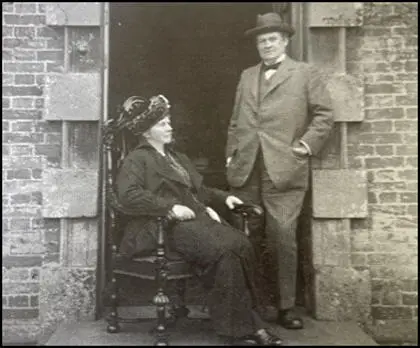
Sybil Thomas gradually became frustrated by the lack of success in achieving women's suffrage and when her young daughter, Margaret Haig Thomas, announced her intention to join the Women Social & Political Union (WSPU) procession to Hyde Park on 21st July 1908, Sybil decided to accompany her on the grounds "(a) she did not think an unmarried girl should walk unchaperoned through the gutter, (b) because she believed in votes for women". (13)
Women's Social and Political Union
Under the influence of her more radical daughter, Sybil became a supporter of the WSPU and fund-raising events for the organisation at Llanwern. On 1st March 1912, Emmeline Pankhurst, Christabel Marshall and Mabel Tuke were arrested for breaking windows in Downing Street. When she was arrested Pankhurst said: "I have only this fear that perhaps our self-retraint has prevented us from doing so much as necessary, we are prepared to take all the stepsthat are necessary and to face the consequences." (14)
In 1913, Sylvia Pankhurst, with the help of Keir Hardie, Norah Smyth, Julia Scurr, Mary Phillips, Millie Lansbury, Eveline Haverfield, Lilian Dove-Wilcox, Florence Haig, Maud Joachim, Nellie Cressall and George Lansbury established the East London Federation of Suffragettes (ELF). An organisation that combined socialism with a demand for women's suffrage it worked closely with the Independent Labour Party. It also began production of a weekly paper for working-class women called The Women's Dreadnought. (15) Sybil Thomas also joined and became the treasurer of the ELF. (16)
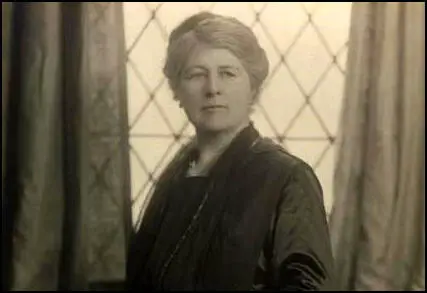
On 12th February, 1914, Sybil organised a petition attacking the Cat & Mouse Act as cruel, against the best traditions of British law and "subversive of constitutional liberties". (17) Twelve days later Sybil joined forces with Henry Nevinson, Henry Devenish Harben, Laurence Housman and Francis Meynell in going to see Prime Minister H. H. Asquith. According to the The Daily News: "Three of them were received by Mr Asquith's secretary on Tuesday night, and after leaving Downing Street they proceeding in increasing numbers to Parliament Square, and several began to address the crowd from the plinth of Richard Coeur de Lion. They were requested by the police to desist, but refused, and the defendants were thereupon arrested." (18)
Meynell was charged with assaulting a policeman, and the others with obstructing or resisting the police. A policeman gave evidence that he was holding Houseman when Maynell came up and struck the witness a very violent blow in the side with his clenched fist, saying, "Let my friend go, or I will give you some more." Meynell, who declared that the whole object in going to the square was to get arrested, were fined 40s, the magistrate observing that if a police officer struck a man, no excuse could be made for him, but every excuse was supposed to be allowed for an educated man who struck an officer. (19)
Sybil Thomas admitted having caused an obstruction. She justified her action by declaring that "there was no other way as a woman but to go and do this. I went quite deliberately and intended to be taken up, for I knew that was the only way in which my views could be heard." (20)
When asked if she wished to say anything Sybil Thomas desired to call her husband to give evidence as to her character. David Alfred Thomas "rose from the body of the court and walked towards the witness-box, but the magistrate stopped him, remarking that he took it a husband was bound to give evidence in his wife's favour." Thomas and the remaining defendants were bound over in £5 to keep the peace for six months. When she refused to be bound she was cheered by a crowd of women at the back of the court. (21)
Imprisonment of Margaret Haig Thomas
Margaret Haig Thomas admired her cousins and aunts who had gone to prison during the struggle for women's suffrage. This included Florence Haig, Evelyn Haig, Cecilia Wolseley Haig, Janet Haig Boyd and Charlotte Haig. Margaret suggested that prison for Florence was a pastime: she went "at such intervals as she could afford to spare from her own trade of portrait painting" and that Janet "went most regularly, never less than once a year." Margaret claimed that Janet insisted on greeting each clergyman with "How do you do - I've just come out of prison." (22)
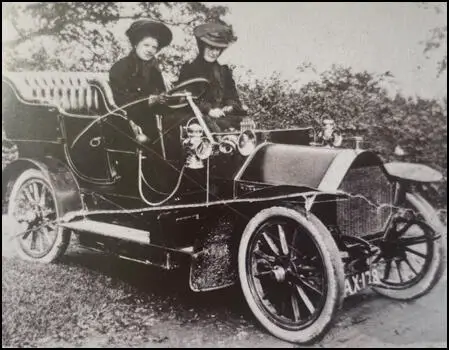
Cecilia Wolseley Haig was one of those who received a beating from the police during the Black Friday demonstration. As the Votes for Women pointed out: "Miss Haig was entirely unaware of the presence of any illness, and, indeed, felt quite well. But on Black Friday, she was not only subjected to assault of a most disgraceful kind, but was also trampled upon." Her two unmarried sisters, Florence Haig and Evelyn Haig. nursed her but she died on 31st November 1911. (23)
Sylvia Pankhurst claimed that she died because of the beatings they endured that day. "I saw Cecilia Haig go out with the rest; a tall, strongly built, reserved woman, comfortably situated, who in ordinary circumstances might have gone through life without receiving an insult, much less a blow. She was assaulted with violence and indecency, and died in December 1911, after a painful illness, arising from her injuries." (24)
Margaret Haig Thomas gradually became convinced that women had to increase its militant activity if they were to obtain the vote. This included disrupting postal deliveries. In December, 1911, Emily Wilding Davison, set fire to three pillar boxes in Parliament Street in London. She was arrested and sentenced to six months in prison. This began a long campaign where Britain's 50,000 pillar boxes were targeted. On one weekend in March 1913 there were fourteen attacks on letter boxes in Cardiff alone. (25)
Laurence Housman revealed in his autobiography, The Unexpected Years (1937) that Margaret confessed to him about setting fire to pillar boxes when he was staying with David Alfred Thomas and Sybil Haig Thomas: "At dinner the increase of militancy was being discussed, and, in certain of its forms, condemned. Only that week a local letter box had been set on fire; it was the latest form that militancy had then taken; and in that high social circle it was not approved: it was hoped that the perpetrators would be caught and punished. My host's daughter was sitting next to me: she gave me a soft nudge. 'I did it', she said." (26)
In December 1912 there were several local newspaper reports of Newport's pillar boxes being attacked. The glass tubes containing acid were labelled "Votes for Women". The following year Margaret Haig Thomas visited the Women's Social & Political Union headquarters in London. She was given twelve long glass tubes with corks. Six contained phosphorous and the other six held a chemical compound. When mixed together they produced flames. "She travelled home in a crowded third-class railway compartment with her incendiary materials in a flimsy covered basket on the seat beside her." (27)
On 25th June, 1913, she placed two of the tubes in a foolscap envelope and took a tram for the five-mile journey to Newport. "My heart was beating like a steam engine, my throat was dry, and my nerve went so badly that I made the mistake of walking several times backwards and forwards past the letter box before I found the courage to do it... I smashing them on the inside edge of the letter box as one let them drop. It looked to other passers-by exactly as if one were posting a letter." (28)
Within a few minutes, smoke could be seen coming from the letter box. Water from a nearby house was used to extinguish the smoke and flames and a postman saved some of the letters. The next day, as she was on her way from her house to a tea party in Llanwern village, Detective-Sergeant Caldecott and Police Constable King arrested her and took her to the police station. Margaret was locked in a cell with a wall covered in vomit. It smelt like a urinal. She remained there for over four hours until her husband arrived to pay £100 bail money. (29)
Margaret's trial took place on 11th July, 1913. Margaret pleaded "Not Guilty" as the WSPU required but "made no special effort to pretend that I had not done the thing". (30) It was argued in court that the contents of the tube had been prepared "by a chemist of exceedingly great ability" and it damaged eight letters and five postcards. Margaret was found guilty and fined £10 plus 10s costs. Margaret refused to pay her fine or allow others to pay for her and she was sentenced to a month in the county gaol at Usk. (31)
Margaret went on hunger-strike. "I had made up my mind that I would not touch food whilst I was in prison. I had further decided that in order to hurry on the time when I should be weak enough to be let out I would refuse drink for as long as I could; but would take it if and when I found my thirst unendurable... I did not feel particularly hungry, but I did get terribly thirsty. By the end of three days I had reached the stage where I had difficulty in restraining myself from drinking the contents of the slop pail." The authorities were concerned about her health and released her on the sixth day under the terms of the Cat & Mouse Act. (32)
On the day that her licence expired Margaret Haig Thomas fine was mysteriously paid. It has been assumed, but never proved, that her husband paid the money. On the same day an inaugural meeting of a branch meeting of the Church League for Women's Suffrage was held in a local hall. Sybil Haig Thomas was one of the organisers. Margaret attended and, according to the press "seemed to be quite recovered from the effects of her hunger strike."When asked about the payment, she replied that the fine had been paid contrary to her wishes. (33)
First World War
During the First World War she gave over part of the house at Llanwern as a hospital. In 1916 her husband, David Alfred Thomas, was granted the title, Lord Rhondda, and appointed by David Lloyd George as president of the Local Government Board. He was transferred in June 1917 to be minister of food control. (34) Lady Rhondda, chaired the women's advisory committee of the National Savings Committee and she travelled extensively with her husband in carrying out his duties for the government. (35)
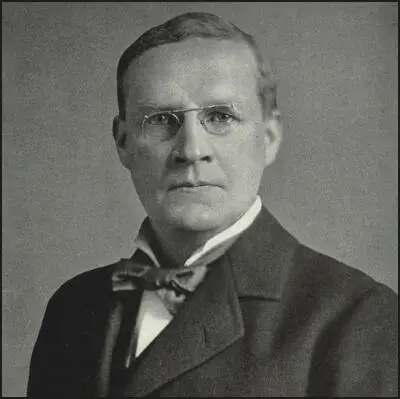
Margaret Haig Thomas worked closely with her father, who was sent to the United States to arrange the supply of munitions for the British armed forces. In May 1915, Margaret was returning from the United States with her father on the Lusitania when it was torpedoed by a German submarine. (36) She later recalled: "I unhooked my skirt so that it should come straight off and not impede me in the water. The list on the ship soon got worse again, and, indeed, became very bad. Presently the doctor said he thought we had better jump into the sea. I followed him, feeling frightened at the idea of jumping so far (it was, I believe, some sixty feet normally from "A" deck to the sea), and telling myself how ridiculous I was to have physical fear of the jump when we stood in such grave danger as we did. I think others must have had the same fear, for a little crowd stood hesitating on the brink and kept me back. And then, suddenly, I saw that the water had come over on to the deck. We were not, as I had thought, sixty feet above the sea; we were already under the sea. I saw the water green just about up to my knees. I do not remember its coming up further; that must all have happened in a second. The ship sank and I was sucked right down with her." (37)
Although over a thousand passengers died, Margaret and her father were rescued. As Deirdre Beddoe has pointed out: "The ordeal made Margaret determined to play her own part in the war effort. She was appointed as commissioner of Women's National Service in Wales, as controller of women's recruiting and, before the war ended, to the Women's Advisory Council of the Ministry of Reconstruction, which was concerned with issues on which she felt strongly. She was committed to the idea that women should remain an integral part of the post-war workforce, and to that end she set up the Women's Industrial League in 1918 to campaign for the rights of women workers. (38)
Viscount Rhondda
In June 1915, David Lloyd George, Munitions Minister, asked David Alfred Thomas to go to back to the United States to arrange supplies of munitions. Lloyd George explained to the House of Commons: "I felt, in consequence of the great importance of the American and Caadian markets and of the innumerable offers which I have received, directly and indirectly, to provide shell munitions of war from Canada and the United States of America, it was very desirable that I should have someone there who, without loss of time, which must necessarily take place when all your business is transacted by means of cable, should be able to represent the Munitions Department in the transaction of business there and find out exactly the position. I propose to send over, on behalf of the Munitions Department, a gentleman who was once a member of this House - a very able business man. He has business relations with America on a very considerable scale, and I propose to ask Mr. D. A. Thomas to go over to America for the purpose of assisting us in developing the American market." (39)
D. A. Thomas admitted that it was a daunting prospect as he could not ride himself of memories of the Lusitania and told Lloyd George of his fears. He replied he could not think of an efficient substitute. Less than two months after his ordeal at sea, Thomas sailed from Liverpool on the St Louis. This time, his wife insisted on going with him. They were escorted through the danger zone by two British destroyers. On arrival in New York, he was met by the British Ambassador. He was guarded by detectives as they feared he might be assassinated by German sympathisers. Thomas was away from home for five months. (40)
In 1916, David Lloyd George appointed D. A. Thomas as the President of the Local Government Board. He found the experience frustrating as his attempts to establish a separate Ministry of Health ended in failure. (41) In March 1917 he complained of a pain in his heart. A heart specialist diagnosed angina and recommended he resign from the government and then he could live until he was ninety. (42)
Thomas did not take this advice but he did initially refuse to take the job as Minister of Food Control. Conscious of the difficulty of refusing a post in the midst of war, he took office in June 1917. (43) In this new post he worked extremely long hours in a department of 5,000 employees and his daughter later claimed he "often started work a 3 or 4 am in the morning". (44) The actions that Thomas took reduced people's food allowances. The Evening Standard commented: "No Minister has achieved the quite the same popularity as the Minister who ruthlessly cut down the people's food allowances." (45)
Just after his sixty-second birthday D. A. Thomas contracted pleurisy and spent April and May in bed or in a chair in the garden. Thomas tried to resign but the offer was refused. On 3rd June 1918, Thomas was promoted to the rank of Viscount for his service as Food Controller and King George V agreed "that the Remainder of your peerage should be settled upon your daughter... in cases where the service rendered to the State is very conspicuous". (46)
David Alfred Thomas died of heart disease and rheumatic fever on on 3rd July, 1918. David Lloyd George told a memorial service three days later that his efforts represented "one of the most distinctive triumphs of the war". (47) The Daily Telegraph declared: "When history completes its record of the leaders who baffled Prussia's ambition for the mastery of the world a distinguished place will be given to Lord Rhondda." (48) He left £20,000 to Gonville and Caius College to provide "Rhondda Scholarships." (49)
Viscountess Rhondda was appointed a dame commander in the Order of the British Empire in 1920 for her wartime services. According to the Western Mail she was "A woman of strong but pleasing personality". (50)
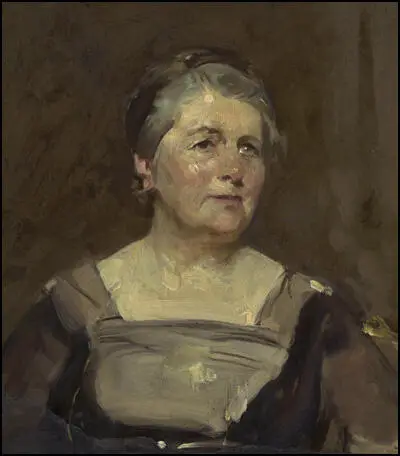
Viscountess Rhondda became more conservative as she grew older. Margaret Haig Thomas wrote to Elizabeth Robins, that her mother was "inclined to regret what I think she regards as my Bolshevist tendencies, being herself what one might call a gentle and very inconsistent die-hard, but we do not allow our political differences to trouble us." (51)
Sybil Thomas, Viscountess Rhondda, died at her home, Llanwern Park, Newport, Monmouthshire, on 11th March 1941, and was buried at Llanwern on 14 March. (52)
Primary Sources
(1) Evening News (25th February 1914)
Six men and woman arrested in Parliament Square, after an attempt had been made to send a deputation to the Prime Minister on the subject of the Cat and Mouse Act, were charged today at Bow Street. Their names were Henry Nevinson (55), Henry Devenish Harben (39), Katherine Haig (39), Lawrence Houseman (55), Sybil Margaret Thomas (37) wife of Mr D. A. Thomas and Francis Meynell (22).
Meynell was charged with assaulting a policeman, and the others with obstructing or resisting the police.
A policeman gave evidence that he was holding Mr Houseman when Maynell came up and struck the witness a very violent blow in the side with his clenched fist, saying, "Let my friend go, or I will give you some more."
Meynell, who declared that the whole object in going to the square was to get arrested, were fined 40s, the magistrate observing that if a police officer struck a man, no excuse could be made for him, but every excuse was supposed to be allowed for an educated man who struck an officer…
Mrs Thomas admitted having caused an obstruction, and when asked if she wished to say anything she desired to call her husband to give evidence as to her character. (laughter)
Mr. D. A. Thomas, the Welsh coal magnate, rose from the body of the court and walked towards the witness-box, but the magistrate stopped him, remarking that he took it a husband was bound to give evidence in his wife's favour.
Mrs Thomas and the remaining defendants were bound over in £5 to keep the peace for six months.
(2) The Daily News (26th February 1914)
The six men and women suffragists who were arrested while trying to hold a meeting in Parliament Square on Tuesday night were brought Sir John Dickenson at Bow Street yesterday…
Mr Muskett, who prosecuted, said that apparently the defendants had formed themselves into an independent body for the repeal of the "Cat and Mouse Act". Three of them were received by Mr Asquith's secretary on Tuesday night (24 th February 1914), and after leaving Downing Street they proceeding in increasing numbers to Parliament Square, and several began to address the crowd from the plinth of Richard Coeur de Lion. They were requested by the police to desist, but refused, and the defendants were thereupon arrested…
Mr Nevinson, whose case was taken first, said that but for him official position he was sure that the magistrate would be standing by his side in the dock. The object of the demonstration was to protest against the Government's treatment of women political offenders. He had a long and varied career, and had tried to do the State some service, but he had never been prouder than he was that day standing in the dock…
Upon Mrs Thomas refusing to be bound she was cheered by a crowd of women at the back of the court.
Student Activities
References
(1) David Simkin, Family History Research (18th May, 2023)
(2) Angela V. John, Turning the Tide: The Life of Lady Rhondda (2013) page 28
(3) Margaret Haig Thomas, D. A. Thomas: Viscount Rhondda (1921) page 16
(4) Angela V. John, Turning the Tide: The Life of Lady Rhondda (2013) page 28
(5) Angela V. John, Turning the Tide: The Life of Lady Rhondda (2013) page 29
(6) John Williams, David Alfred Thomas : Oxford Dictionary of National Biography (3rd January, 2008)
(7) Angela V. John, Turning the Tide: The Life of Lady Rhondda (2013) page 33
(8) Angela V. John, Turning the Tide: The Life of Lady Rhondda (2013) pages 34-36
(9) John Williams, David Alfred Thomas : Oxford Dictionary of National Biography (3rd January, 2008)
(10) Roy Hattersley, David Lloyd George (2010) page 61
(11) John Williams, David Alfred Thomas : Oxford Dictionary of National Biography (3rd January, 2008)
(12) Deirdre Beddoe, Sybil Haig Thomas : Oxford Dictionary of National Biography (23rd September, 2004)
(13) Margaret Haig Thomas, This Was My World (1933) page 118
(14) Votes for Women (29th March 1912)
(15) Sylvia Pankhurst, The History of the Women's Suffrage Movement (1931) pages 416-423
(16) Deirdre Beddoe, Sybil Haig Thomas : Oxford Dictionary of National Biography (23rd September, 2004)
(17) Sybil Haig Thomas, petition sent to Prime Minister H. H. Asquith (12th February 1914)
(18) The Daily News (26th February 1914)
(19) The Evening News (25th February 1914)
(20) Angela V. John, Turning the Tide: The Life of Lady Rhondda (2013) page 116
(21) The Daily News (26th February 1914)
(22) Margaret Haig Thomas, This Was My World (1933) pages 161-164
(23) Votes for Women (5th January 1912)
(24) Sylvia Pankhurst, The History of the Women's Suffrage Movement (1931) page 343
(25) Angela V. John, Turning the Tide: The Life of Lady Rhondda (2013) pages 96-97
(26) Laurence Housman, The Unexpected Years (1937) page 273
(27) Angela V. John, Turning the Tide: The Life of Lady Rhondda (2013) page 100
(28) Margaret Haig Thomas, This Was My World (1933) pages 153
(29) Angela V. John, Turning the Tide: The Life of Lady Rhondda (2013) page 102
(30) Margaret Haig Thomas, This Was My World (1933) pages 154
(31) The Western Mail (18th July, 1913)
(32) Margaret Haig Thomas, This Was My World (1933) pages 157
(33) Angela V. John, Turning the Tide: The Life of Lady Rhondda (2013) page 106
(34) John Williams, David Alfred Thomas : Oxford Dictionary of National Biography (3rd January, 2008)
(35) Deirdre Beddoe, Sybil Haig Thomas : Oxford Dictionary of National Biography (23rd September, 2004)
(36) Angela V. John, Turning the Tide: The Life of Lady Rhondda (2013) pages 121-129
(37) Margaret Haig Thomas, This Was My World (1933) pages 255-256
(38) Deirdre Beddoe, Margaret Haig Thomas : Oxford Dictionary of National Biography (28th May 2015)
(39) David Lloyd George, speech to the House of Commons (23rd June, 1915)
(40) Angela V. John, Turning the Tide: The Life of Lady Rhondda (2013) page 139
(41) John Williams, David Alfred Thomas : Oxford Dictionary of National Biography (3rd January, 2008)
(42) Angela V. John, Turning the Tide: The Life of Lady Rhondda (2013) page 184
(43) John Williams, David Alfred Thomas : Oxford Dictionary of National Biography (3rd January, 2008)
(44) Angela V. John, Turning the Tide: The Life of Lady Rhondda (2013) page 185
(45) David Evans, In Memory of the Rt. Hon. Viscount Rhondda of Llanwern, P.C. (1918) page 83
(46) Margaret Haig Thomas, D. A. Thomas, Viscount Rhondda (1921) page 91
(47) Angela V. John, Turning the Tide: The Life of Lady Rhondda (2013) page 187
(48) David Evans, In Memory of the Rt. Hon. Viscount Rhondda of Llanwern, P.C. (1918) page 58
(49) Brinley Thomas, David Alfred Thomas (1959)
(50) Western Mail (12 March 1941)
(51) Margaret Haig Thomas, letter to Elizabeth Robins (18th April 1922)
(52) John Williams, David Alfred Thomas : Oxford Dictionary of National Biography (3rd January, 2008)

